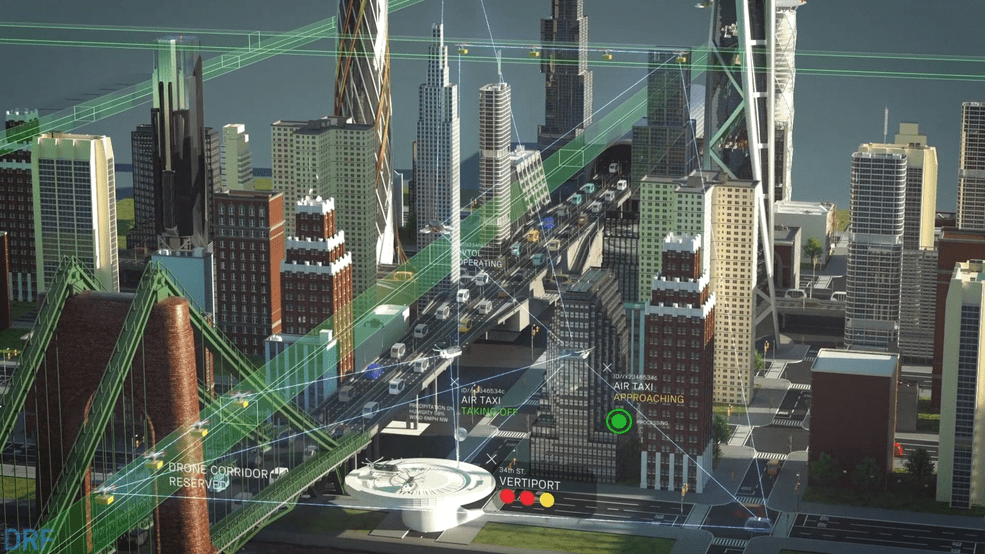“…Consider this example: In a not-too-distant future, a self-operating drone is in the air, on its way to deliver goods, taxi people across town, or even help locate wildfires.
To safely complete its flight, that drone could rely on this new capability to notify it along its route of important information – such as deteriorating weather conditions – that would prompt it to change its course.
Delivering the Goods
To provide these autonomous aircraft with useful data, NASA’s aeronautical innovators will experiment with what are called edge nodes.
These router-like devices would each be one part of a connected, interwoven “fabric” of computers that sends aircraft specific, tailored information wherever they are. This infrastructure would form what some call a “smart” city.
It’s these edge nodes that contribute a significant part of DRF’s vision: they don’t just communicate data – the nodes themselves are what help make sense of the data. That’s the “reasoning” in Data and Reasoning Fabric.
All on their own, the computerized edge nodes would access data, translate it into useful information, and reason what each drone needs to know. The nearest edge device to a vehicle would send the aircraft information specific to its plans and activities in the smart city…”
Credit: NASA
